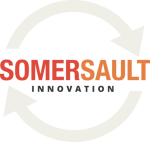WILL ANASTAS, SENIOR VICE PRESIDENT OF ENTERPRISE CORPORATE SALES, SALESFORCE
In the first of a three-part series, Will Anastas, Senior Vice President of Enterprise Corporate Sales, shares the lightbulb moments that led to introducing a new sales discovery method to his team and the payoff they’ve seen as a result. Read part two here. Keep an eye out for part three, where Salesforce account executive Brianna Layton will detail her experience selling this way.
Sales has changed a lot in 20 years. It used to be about cold calling more than anything else. There wasn’t really a need to know that much about your customer. It was a hustle game, a shark tank. At my first sales job, we were basically given a phonebook to make calls from and I was psyched because I was assigned a good letter. I’d call and say “How are you doing? I'm from XYZ company, and I'd like to spend two minutes talking about what our company is and what we do.” When there was interest, I'd keep going. If I was talking to a rental car company, for example, I had a basic understanding of what it did and that was enough.
Now there’s been a big shift in sales. Customers expect you to know about them, so not only what the rental car company does, but what it specializes in (i.e., corporate/leisure), what the relationship is between the company and its top-tier customers, how it’s differentiating itself in a crowded marketplace, what are the pain points in the customer experience, and so on.
That last piece is the difference maker, but it’s a step in the process that is easily skipped. Salespeople are expected to close fast, so they tend to take the path of least resistance and go on the internet to do their research. There’s so much information out there about companies today, that you feel, as a salesperson, that you’ve got this.
Salespeople also tend to fall into a prescriptive rut. A client, or “patient,” calls, presents his or her “symptoms” (i.e., “I have this problem, this problem, and this problem.”) And the salesperson says, “Oh, fantastic, let me give you this ‘prescription,’ our product. It will solve this, this, and this.” The client takes the salesperson’s prescription. We get our deal. Boom. Everybody’s happy. Right?
But what if the customer (patient) presented his or her symptoms and instead the salesperson said, “Okay, I understand you have those symptoms. However, I have spent time with the patient and understand what he or she is going through and here’s what I think the root causes are. And actually, along with the three symptoms you told me about, there are four more. Not only will my prescription solve for the first three, if you take these two additional ‘medications,’ it will also treat the other four symptoms you didn’t even realize you had.” That extra layer of curiosity is the game changer.
What our sales process was missing
I had a couple of personal experiences that prompted me to realize the significance of sales discovery and that I wanted my sales team trained on it. First, like many people in life, I went through the home buying and selling experience. One thing that drove me crazy was that it took the real estate firm three weeks to pick up the for-sale sign. I had people literally looking in my windows because the sign was still up.
Shortly after, I had the opportunity to present to the CEO of the broker company I used in Salesforce’s Executive Briefing Center around my experience. I outlined everything I loved about the process and things I thought could be improved based on the experience I had as his customer, who not only sold his house through him but also bought a house from him. I shared that when I investigated why the for-sale sign wasn’t removed more quickly, I learned that it was because the agent had to call the sign pickup company. Then a manual ticket had to be generated for the actual pickup to happen. It’s basically relying on two humans to coordinate. And nine times out of 10, it probably works. But in my case, it didn’t.
When I told the CEO that this is a process that we could automate with technology, and that as soon as a home was off the market, there could be a workflow in place that instantly sent a ticket to the sign guy, he said “Wow.” Once we outlined all of the ways we could help improve his customers’ experience using our technology, he called it a “curb jumper”: information and a solution that could rocket his company past its competition. Not only was it insight about a problem he didn’t even know his company had, it also came from someone who had experienced it from the customer point of view.
I also attended a session lead by Somersault Innovation co-founders Ashley Welch and Justin Jones. They walked through design thinking concepts and how they could be used in sales discovery, a program they call Sell By Design. A lightbulb went off in my head that teaching our salespeople the key steps in this process — to be incredibly observant, curious, and empathetic — were three things missing from our methodology.
Salesforce has an incredibly fast-paced sales environment, probably the fastest I’ve experienced in my career. But at times, I saw that our team wasn’t taking that extra step and time required because we’re constantly asking where the deal is, and in a rush to get things done. We never stopped and said, “Well, wait a minute, what is this experience like for the end consumer or the customer's customer?”
How we introduced the methodology
We started with a one-day pilot training of 10 account executives (AEs) from our enterprise corporate sales (or ECS Geo) team. This is mainly an inside sales function, with occasional opportunities for travel. With ECS Geo, discovery is a critical component of understanding a prospect’s needs and pain points. They were taught the design thinking concepts and then told to go out of the office and do real-life discovery, first at a paint store chain, and then at a high-end department store known for offering a great customer experience. One thing I really liked is that it did not require them to “prescribe” products to fix the insights they observed; in fact, we did not talk about product all day. It was all about observing, being curious, and learning what it was like to be a customer.
I’ll let one of our account executives, Brianna Layton, share her experience in the third-part of this series, but it was described to me as the best training we have ever done. The AEs’ homework following the pilot training was to choose two or three greenfield or underperforming accounts, apply the Sell By Design techniques, and see what the results could be.
We’ve now had 50 salespeople complete the training, with plans for another 50 to take it over the next six months. From a business standpoint, we measured the success and pipeline has spiked in the accounts where this method has been applied, compared to historical averages. This has been followed by significant improvements in bookings in the chosen accounts.
Key to making this program successful is that we gave the reps permission to do sales discovery in this way. We told them point-blank you can take as much time as you want with this. And if it causes us to have deals pushed out because you have to work on them and develop them a little more because of the discovery you’ve done, we’re totally fine with that. Because we know the opportunity is going to be bigger and more meaningful than if they just closed a quick transaction.
Once they had our sign-off, they did it, and they liked it. And they'll want to do it more. Which is great. But the permission piece was really critical from management at the start. After all, I understand the yin and yang around this. Salespeople are measured monthly, quarterly, and yearly. If you’re in a high-speed sales environment, such as Salesforce, slowing down to do this kind of discovery seems counterintuitive.
And everyone feels that. As a sales leader, you’re basically banking that you’ve got enough stuff going on at a macro-level that AEs can take some extra time with a couple of accounts, see the benefits from the extra time, and have it become a natural part of the sales motion. I do believe that — depending on the structure of the company — you can have both activities happening at the same time, by the same salespeople, and see big results.
Come to Sales Summit 2016 to hear Will Anastas speak live on how Salesforce doubled pipeline by changing the way account executives do sales discovery.






